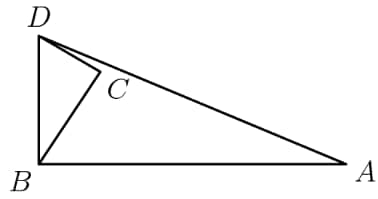2017 AMC 8
Complete problem set with solutions and individual problem pages
Problem 18 Hard
In the non-convex quadrilateral shown below, is a right angle, , , , and . What is the area of quadrilateral ?

- A.
- B.
- C.
- D.
- E.
Answer:B
Solution 1
We first connect point with point .

We can see that is a right triangle. We can also see that is a right triangle, by the Pythagorean triple. With these lengths, we can solve the problem. The area of is , and the area of is . Thus, the area of quadrilateral is
Solution 2
is a right triangle. So the area of is . Then we can use Heron's formula to compute the area of whose sides have lengths , , and . The area of = , where s is the semi-perimeter of the triangle, that is Thus, the area of is , so the area of is
